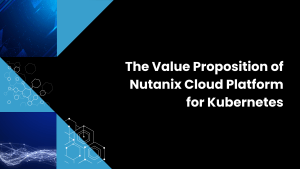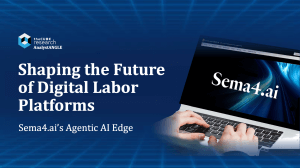Premise:
The lure of Public Cloud offers an exciting proposition – nearly unlimited resources, a rich set of services, scalability based on demand, and pay-as-you-use pricing models. But for many companies, the challenges of data location, network latency and complex application migrations make the Public Cloud an unavailable option for their business. These limitations have led many CIOs to seek a Hybrid Cloud strategy, but until recently, this has been difficult to implement and operate.

Since 2009, many tech vendors have have attempted to bring Hybrid Cloud solutions to market, mostly with limited success. While these offerings have evolved over time, they have struggled to capture large market adoption for several reasons:
- 1st Generation – These solutions were based on the premise that compatible/identical hardware in private data centers and a public cloud provider would create the basis of a Hybrid Cloud. These solutions lacked cloud management software and operational consistency.
- 2nd Generation – These solutions were built on the concept of compatible cloud management software running on multiple clouds (private or public). These solutions lacked a common operational model between clouds.
- 3rd Generation – These solutions had compatible infrastructure and cloud management software between private data centers, but lacked the tools and operational frameworks to attract application developers to use the platforms.
While many of these offerings were able to evolve the interoperability challenges of Hybrid Cloud, both at the hardware and software layers, they all struggled to deliver an operational model that had the agility of public cloud or the features to prevent developers from becoming Shadow IT.
The 4th Generation of Hybrid Cloud
In 2016, the 4th Generation of Hybrid Cloud is emerging in the marketplace. These solutions are directly attacking the biggest barriers to Hybrid Cloud adoption, specifically:
- Many companies want the agile, feature-rich experience of the public cloud, but have physical data-locality issues (data sovereignty, compliance, governance, cultural edicts) that mandate private cloud environments.
- Many companies have existing applications with extremely low-latency requirements that will not tolerate the delays of the public Internet. These require application and data proximity within a private cloud.
- The high costs of hiring or re-training IT staff with the skills to build and operate a cloud environment at the IaaS layer.
- The high costs of hiring or re-training IT staff with the skills to build and operate a cloud environment at the PaaS layer.
- Delivering operational consistency in either a private cloud or public cloud environment.
- Managing the movement of applications or data between private and public cloud environments.
- Managing the security of applications or data between private and public cloud environments
The 4th Generation of Hybrid Cloud solutions align very well to Wikibon’s True Private Cloud definition, and many take it several steps further by bridging the operations of both the public and private cloud resources. These solutions bring together interoperable software, converged infrastructure, and managed operations. Not only do these solutions reduce the Day 0 cost of setup and implementation by up to 50%, but they can also reduce the on-going costs of operations, maintenance and updates by 30-50%. More importantly, by offloading the underlying operations, companies are able to better focus on the deployment of new applications to help grow their business.
Oracle Cloud Machine – An Onramp to the Oracle Cloud
Oracle has been rapidly expanding its SaaS, PaaS and IaaS public cloud presence with Oracle Cloud over the last 2-3 years. This augments the company’s existing portfolio of Engineered Systems and Appliances that run on-premises. Bringing those two worlds together is the objective for many of its customers and emphasizes the firm’s stated strategy, which it generically refers to as “Same:Same.” With the introduction of the Oracle Cloud Machine, part of the ‘Cloud at Customer’ line of solutions, the database giant is taking deliberate steps to making that vision a reality. We see this offering as one of only a handful of 4th generation hybrid cloud offerings.
Mark Hurd on Oracle’s long term cloud solutions strategy @MarkVHurd @furrier @Oracle #CUBEgems https://t.co/VnVHgoJWNB — theCUBE (@theCUBE) January 20, 2016
The Oracle Cloud Machine brings many aspects of the Oracle Cloud directly into customer’s data center, specifically:
Oracle Cloud Services – The Oracle Cloud Operations team will manage the underlying hardware and software (IaaS) for the Oracle Cloud Machine. Customers can focus on their applications and new application development. Customer-facing resources are delivered through a self-service user-interface.

Consumption-Based Pricing – Oracle delivers the complete package of hardware and software into the customer’s data center for a fixed monthly cost. This OPEX-centric pricing allows customers to avoid unexpected usage-based costs that they may incur using public cloud resources.
Oracle Java Cloud Service – A complete Oracle WebLogic cluster deployed, including load-balancing. This delivers the Java PaaS layer that Oracle customers know and integrate into existing applications.
Oracle Integration Cloud Service – A framework which simplifies integrations for SaaS, PaaS and existing on-premises applications.
Oracle Database Service – Managed Oracle Database-as-a-Service, including updates and backups.
Oracle Messaging Cloud Service – Enables communications between software components by sending and receiving messages via a single messaging API to achieve automated business workflows.
Oracle Application Container Cloud Service – Allows developers of Java SE or Node.js applications to easily deploy applications to a modern PaaS framework.
Oracle is emphasizing that the base service with the Oracle Cloud Machine comprises its own set of built-in IaaS services (i.e. all the hardware, software and related cloud services like cataloging are all Oracle in a subscription model). Oracle is positioning this homogeneity as similar to a full cloud experience with the PaaS services layer on top of its core IaaS platform (i.e. committed subscription term with optional monthly metered pricing for the PaaS component).
Need to Know
The Oracle Cloud Machine will be available to customers in three configuration sizes (see Figure 1 below). Each configuration includes Intel x86-based servers, ZFS-based storage and 10Gb network connections into the data center. The Oracle Cloud Machines will include all of the Oracle software required to deliver the application services, as well as software for managing, monitoring, troubleshooting and updating the environments.

Oracle will provide regular updates to the Oracle Cloud Machine, expected to be every 3-6 months, that will include new features and software patches. Oracle will work closely with customers to insure that the updates are non-disruptive to their business.
Caveats:
As of the time of this new product launch, Wikibon has not yet had the opportunity to speak with any Oracle Cloud Machine users. As such, the following factors should be noted by potential users when evaluating this new offering:
- While the Oracle Cloud has large amount of available resources for consumption, an Oracle Cloud Machine is a fixed amount of resources. On-premises use-cases will need to be more conscious of the available resource constraints.
- Oracle needs to provide users with an understanding of how they will provide High Availability to on-premises Oracle Cloud Machine resources.
- Oracle owns and operates the Oracle Cloud Machine. As such, just as in the Oracle Cloud, customers will not be able to make changes to the infrastructure and software that runs below what they are able to access as administrators or users of the system. This requires a shift in mindset for both application developers and operations teams.
- Oracle has stated that updates to the Oracle Cloud Machine will be every 3-6 months. Customers can expect to work directly with Oracle to manage those upgrades and any potential downtime to the system in a way that fits their business needs. Customer maintenance windows may create scenarios where the software running on the Oracle Cloud and the Oracle Cloud Machine may be out-of-sync for a period of time.
- This out-of-synch exposure exists for any private-to-public cloud connection, however Oracle is allowing customers to influence the timing of the updates. Customers should either explicitly plan for this eventuality or give Oracle carte blanche to do the updates for them.
- Not all Oracle Cloud services will be available on the Oracle Cloud Machine at the time of the launch. Customers should check with their Oracle representative to understand the timeline for Oracle Cloud services being available and supported on the Oracle Cloud Machine.
Conclusion:
By bringing together hardware, software, application services and managed operations, Oracle is laying out a strong vision for helping customers bring Hybrid Cloud services directly to their business opportunities. As Oracle delivers the Oracle Cloud experience via the Oracle Cloud Machine, their customers can move past the many challenges of integrating technology and adapting internal operations to build a cloud environment for their business.
Action Item:
For Oracle customers, the vision of a new operational model that is ostensibly enabled by the Oracle Cloud Machine should be a critical piece of their Cloud strategy moving forward. To the extent that Oracle delivers on its promises, customers can immediately benefit from the interoperability between the Oracle Cloud and Oracle Cloud Machine, and will continue to see financial and business benefits by focusing more of their efforts on accelerated application delivery. By reducing the learning curve required to getting applications into an agile cloud environment, Oracle customers have an opportunity to significantly change how they bring value to their business if the Oracle Cloud Machine delivers on its claims.


